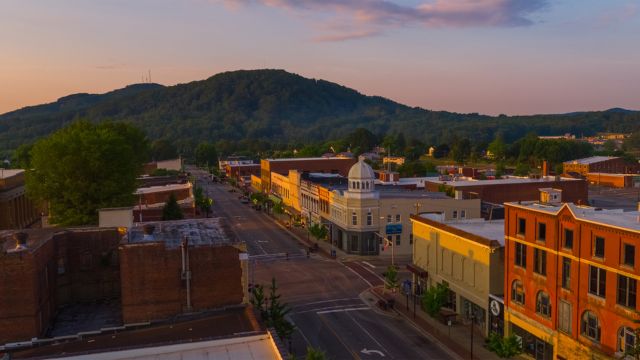North Carolina has a lot to offer visitors, like beautiful cities, mountains, and beaches. However, a number of the state’s towns are not seen as appealing locations to live because of factors like population loss, increased crime, declining standards of living, and economic downturn. These five North Carolina towns are seeing a significant outflow of residents.
Lumberton
With 20,000 residents, Lumberton is a small town in Robeson County that is close to the border with South Carolina. Since 2000, the town’s population has decreased by more than 9%. The community suffers from high rates of poverty (35.5%), low median household income of $28,293 and high rates of crime (14.8 violent crimes and 69.7 property crimes per 1,000 persons). In addition, Hurricane Florence in 2018 caused significant flooding and damage in Lumberton.
Laurinburg
Approximately 15,000 people live in Laurinburg, which is in Scotland County in the southern region of the state. Since 2000, the town has lost more than 8% of its population. The community struggles with high rates of poverty (32.4%), high median household income ($29,506), and high crime (13.7 violent crimes and 76.9 property crimes per 1,000 residents). Laurinburg, a town known for its textile and industrial industry, has seen job losses and economic suffering as a result of automation and outsourcing.
The Roanoke Rapids
With a population of over 15,000, Roanoke Rapids is located in southeastern Halifax County and has suffered a decline of more than 7% since 2000. The community has high rates of poverty (24.9%), low median household income ($34,424), and high crime rates (10.4 violent crimes and 67.4 property crimes per 1,000 residents). The historic hub of the textile and industrial industries, Roanoke Rapids, has experienced economic loss and unemployment like neighboring communities.
Eden
With a population of about 15,000, Eden is a small town in northern Rockingham County that has lost more than 13% of its citizens since 2000. The community struggles with high rates of poverty (22.6%), high median household income ($32,909), and high crime rates (10.8 violent crimes and 64.8 property crimes per 1,000 residents). Due to environmental concerns and outsourcing, Eden, which was once a bustling textile and manufacturing town, has experienced economic hardship and job losses.
Read More: Texas town recognized as one of the country’s “most beautiful” locations
Kinston
Approximately 20,000 people live in Kinston, which is in eastern Lenoir County and has lost more than 16% of its population since 2000. The community struggles with high rates of poverty (35.6%), high median household income ($30,369), and high crime rates (12.9 violent crimes and 66.2 property crimes per 1,000 residents). Natural catastrophes like storms and floods have also negatively impacted the infrastructure and economy of Kinston, a former textile and manufacturing town.
These are a few of the North Carolina municipalities where citizens are leaving in search of greater opportunities and a higher standard of living. These towns are currently not among the many beautiful and thriving places to live in the state. In the future, hopefully, these towns will be able to revitalize themselves and draw in new people.
In Summary
In conclusion, despite the fact that North Carolina has a lot to offer, including energetic cities, stunning mountains, and enticing beaches, a number of communities are seeing a noticeable exodus of citizens as a result of different issues. The towns of Eden, Kinston, Laurinburg, Roanoke Rapids, and Lumberton are seeing a decrease in their population, an increase in crime, a drop in their standard of life, and financial difficulties. These problems have been exacerbated by elements such as industrial shifts, employment losses, and environmental concerns. There is hope that these towns can go through revitalization initiatives to draw in new citizens and develop into more desirable and prosperous communities in the future, despite their current difficulties.




